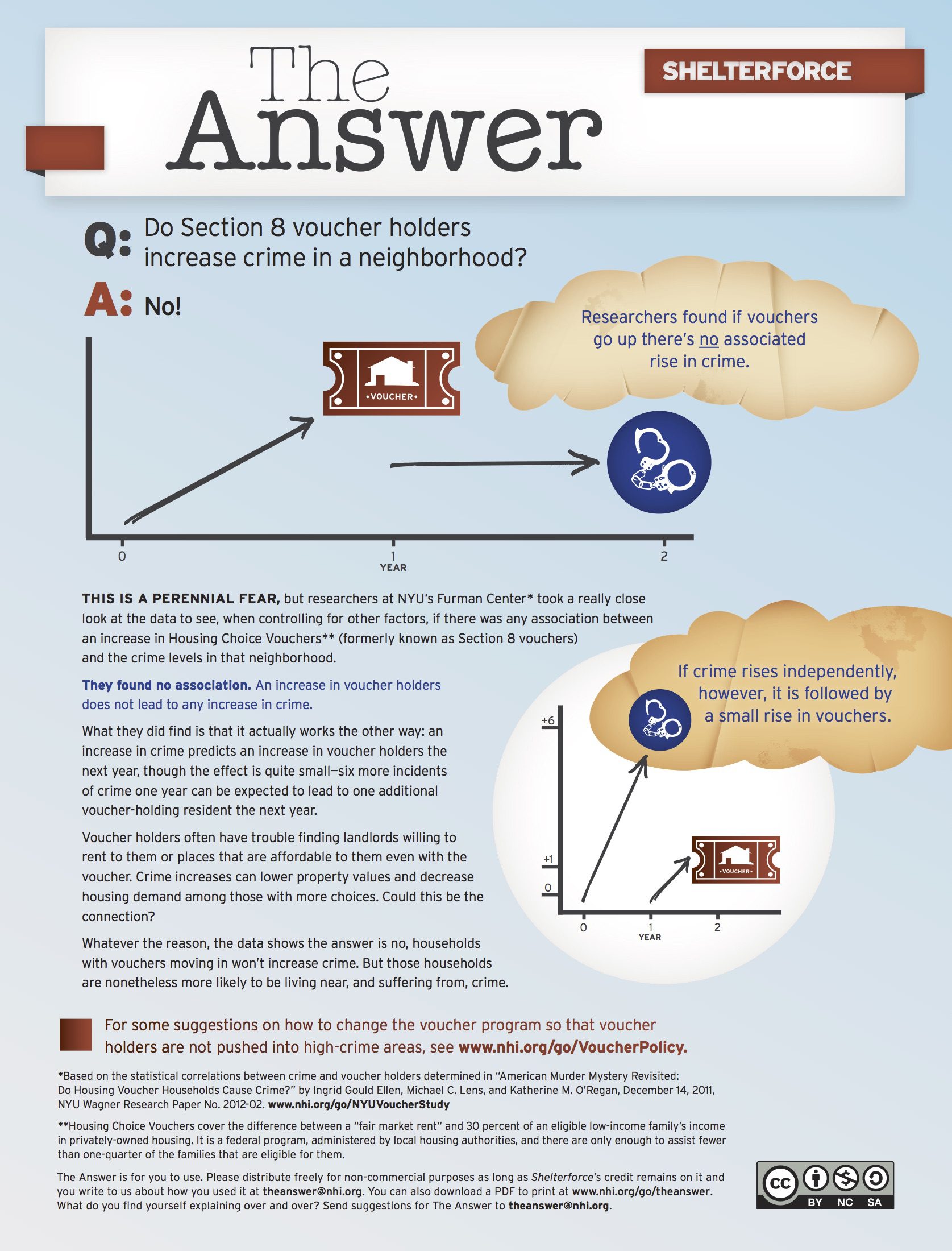President Obama has said, “It is simply unacceptable for individuals, children, families, and our nation’s veterans to be faced with homelessness in this country.”
On February 17, 2009, he signed into law the American Recovery and Reinvestment Act of 2009, a nearly $800 billion stimulus package of temporary programs aimed to alleviate the recession’s negative effects. The package included a three-year, $1.5 billion program called the Homelessness Prevention and Rapid Re-Housing Program (HPRP).
Administered by the U.S. Department of Housing and Urban Development (HUD), HPRP targeted two populations: people who without assistance were at risk of losing their current housing (homelessness prevention), and people experiencing homelessness who needed assistance to obtain and then retain housing (rapid re-housing).
Communities could use HPRP funding for financial assistance, including rental assistance, security deposits, utility payments, moving costs, or hotel/motel vouchers, and for housing relocation and stabilization services, such as case management, housing location services, legal services, and credit repair, for these target populations.
The city of Eugene, Oregon, and its corresponding county, Lane, were awarded just over $1.4 million in HPRP funding. These funds were centralized at the Lane County Human Services Commission (HSC), the inter-jurisdictional body that distributes human services funding locally. They were then further distributed to local nonprofits to provide eligible clients with needed HPRP services.
There was immense pressure to quickly plan and implement the stimulus funding. As a result, HPRP was not leveraged to create anything that could continue without this one-time grant. However, despite its short-term intent, did it have a long-term impact on ending the unacceptable reality of homelessness in the United States?
To answer this, I interviewed local, state, and federal individuals responsible for HPRP, including direct service providers, local and state grantees, technical assistance providers, and federal administrators. This provided a reflection on HPRP from a community viewpoint, and what I found was that HPRP was, in fact, ending homelessness—sort of.
Lane County’s program data reports that 89 percent of HPRP clients exited the program to permanent housing. This exceeds HUD’s national goal of 70 percent. Overall, the program reported assisting over 1,000 individuals in transitioning out of or avoiding an episode of homelessness.
These are the baseline measurements of success for Lane County’s HPRP. However, in addition to the numbers, HPRP launched a set of positive practices and challenges into the community. These qualitative measures, if they outlast the funding, reflect whether this stimulus program made more than a one-time impact on homelessness.
Large-Scale Movement Toward Housing-Focused Practices
HPRP contributed to long-term homelessness solutions by initiating a mass movement toward housing-focused strategies.
Housing instability negatively affects people. Without a stable home, other activities, such as gaining employment, excelling in school, or eating nutritious meals, become harder. The immense stress of homelessness limits ability to focus on other goals.
An interviewee explained: “People are almost unable to make long-range plans when they are stressed. The stress hormones our body generates almost shut down our prefrontal cortex. They limit the ability to make rational and long-term commitments because biologically we’re supposed to be preparing for fight or flight. That means quick, impulsive behaviors based on these immediate situations, a survival skill thing.”
The goal of housing-focused approaches, also known as “housing first” approaches, like homelessness prevention and rapid re-housing, is to end homelessness quickly, ameliorating many of housing instability’s negative effects. Once a client’s housing crisis is resolved, other supportive services can be pursued if needed.
“Let’s just worry about the housing first,” an interviewee remarked. “Once people are in housing and start to feel faith, then they can decide if they want to go after their other problems. But a lot of these will fade into the background when not exacerbated by stress of the current crisis, and don’t need to be in someone’s treatment plan.”
Both homelessness prevention and rapid re-housing are housing-focused, but limited funds must be targeted toward people needing assistance most. By HPRP’s close, Lane County had spent 74 percent of its grant on homelessness prevention and 26 percent on rapid re-housing. This ratio follows the national trend; communities leaned toward homelessness prevention, serving high-risk clients who were still in a housing situation, rather than those literally homeless.
Interviewees noted this was due in part to a misinterpretation of HUD’s intent for HPRP. Initial regulations stressed seemingly conflicting goals, such as targeting people most in need, but also those most likely to stabilize with one-time, short-term assistance. Accordingly, some communities created eligibility criteria they hoped would screen out people with longer-term problems resulting in higher success rates. Later, HUD issued additional guidance, but by then, many grantees had already implemented narrow eligibility criteria.
Although Lane County’s service providers understood HUD’s clarification, this misunderstanding continues to surface in similar federal programs. Once this trend began nationally, interviewees remarked it was hard to correct because homelessness prevention is “feel- good work.” It has high success with clients experiencing need. The concern, however, is that research shows that because there is no way to predict who will actually become homeless, the great majority of homelessness prevention funding may not be reducing homelessness.
Meanwhile, prevention efforts inhibit funds from being spent on rapid re-housing, which does successfully reduce homelessness. Of Lane County’s rapid re-housing clients, 75.4 percent exited HPRP to permanent housing, also higher than HUD’s 70 percent goal. This shows that even clients with the highest needs and barriers to housing can still be successful in a housing-focused, crisis-response approach.
Of Lane County’s post-HPRP investments, 80 percent are going into rapid re-housing and 20 percent into homelessness prevention, exactly the opposite of how HPRP played out nationally. As an interviewee explained, “The reality is that the need in the community is to support both homelessness prevention and rapid re-housing efforts, and there aren’t enough resources to adequately meet either need.”
Getting Better Data
The data and data management systems that HPRP enabled nationally will have an ongoing effect, for two reasons.
Donors look for programs with records of decreasing homelessness. Quality data on client outcomes in a program with a clear focus, like HPRP, shows donors that their money is being used judiciously. HPRP established effective services that can be backed up by data and shared with community supporters.
Beyond fundraising, HPRP’s data collection efforts provided communities with figures that can inform their program designs. Data can show communities what types of programs work for whom, and where programming can be improved. It can also limit redundancies across service providers as clients are referred between agencies for assistance, ultimately leading to more people served.
“HPRP provided an impetus and funding for [communities] to more fully develop and implement enhanced [Homeless Management Information Systems]—leading to improved service coordination, tracking, and reporting,” an interviewee explained.
Gone Too Soon
By far, interviewees’ biggest concern was that HPRP fell short of lasting change because it lacked sufficient funding and duration to address the severity of the homelessness problem.
“I’m concerned with the fact that the dollars are going away,” says one. “It’s ridiculous. We put together an infrastructure, we put together a system that really works, and certainly the need in Lane County and in Oregon hasn’t gone away—I don’t think it has anywhere nationally really—that concerns me.”
In addition to HPRP’s end, HSC faced million-dollar cuts in other federal, state, and local funding sources. This resulted in some significant staffing reductions. One organization reported cutting its staff by half, with most employees now on a part-time schedule.
Looking at other resources, an interviewee critiqued the level of funding to the Emergency Solutions Grants (ESG) program, which was partly modeled after HPRP and renamed from the Emergency Shelter Grants program to emphasize a housing focus: “If the goal was to make ESG carry on the mission of HPRP, more funding for ESG … would definitely be the way to go, not less funds.”
With tight budgets, Lane County has made hard decisions on where to direct funds. Some interviewees were concerned that the housing focus detracts from emergency services. One nonprofit did not receive any county funding in the 2011–2012 three-year funding cycle for its 17 emergency shelter units, but did for a proposal similar to HPRP. During HPRP, the organization spent $2,000 or less per household over an average of three months to stabilize housing. This is far less than the capital, operating, and human costs of a three-month stay in emergency shelter. Therefore, interviewees remarked that although emergency services will always be needed, the housing-focused shift optimizes scarce resources.
Heightened Community Collaborations
HPRP allowed Lane County to expand the cooperative relationships between city and county governments and the region’s nonprofits. By working together, Lane County provides the best services with similar regulations to clients regardless of where in the county they reside. For the purposes of providing HPRP services, Lane County was broken down geographically into four regions, and each was assigned to a nonprofit organization that had a previously established presence in the community as a first point of contact for people seeking services.
“The nonprofits have a very good relationship with the [HSC], and that improves programming tremendously,” one interviewee remarked.
Nonprofits not only benefited from collaborations with local government, but also with local landlords. Rapid re-housing requires that programs assist very low-income, homeless clients to quickly secure housing, which some landlords saw as a risk. Through HPRP, nonprofits fostered better relationships with local landlords by promising to prevent or mitigate these presumed risks if the landlords would be more flexible in accepting homeless tenants. One interviewee stressed the future importance of these relationships, as they represent trust between nonprofits and landlords. “They’ll know that we can and will be serving this family, and that we are not just going to abandon them.”
Additionally, since HPRP did not directly fund certain services, such as substance abuse or mental health counseling, collaboration amongst nonprofits was also pivotal. An effective referral system between organizations in Lane County ensured clients could quickly access resources they needed.
Lane County’s effective community collaborations are an outcome HUD is specifically promoting. Nationally, communities that used HPRP to cultivate similar collaborations will have that advantage going forward.
Serving Our Nation’s Veterans
HPRP established a foundation upon which a cross-sector effort to house our nation’s homeless veterans could grow.
During HPRP, local interviewees mentioned, in particular, “increased and improved” interactions with the Department of Veterans Affairs (VA). One way this collaboration helped veterans experiencing homelessness was by establishing a local service provider in one of the more rural regions of Lane County as a local liaison to the HUD-VA Supportive Housing (HUD-VASH) program representative. HUD-VASH is a permanent housing subsidy for eligible veterans, but it does not cover utility or security deposits. Therefore, through this partnership, service providers were able to connect veterans to HUD-VASH vouchers and use HPRP funds to cover the utility and security deposits to get them quickly housed.
“Prior to this partnership we treated the veterans with whatever programs we had available,” says one provider. “We did not have anything that would provide ongoing subsidized rent. If a disabled veteran did not have the income to cover the rent on their own, they did not get assistance to move in.”
Building on the partnerships that formed during HPRP, both HUD and the VA are now supporting continued collaboration by requiring coordination between service providers, local government, VA medical centers, and other involved local organizations. In Lane County, this includes a task force to address gaps in services that might exist for veterans. The group will convene with representatives from HUD-VASH and the VA hospital, as well as the Lane County Veterans Outreach Coordinator.
Homeless veterans stand to benefit from the lessons learned as a result of HPRP’s housing-focused strategy. SSVF, which offers HPRP-like services, particularly exemplifies this, with one interviewee explaining how SSVF has “consciously tried to build on HPRP success and avoid [its past] problems.”
“It’s kind of perfect, really,” the interviewee continued. “Local experience fueling national policy, which assists local experience. Just how new policy should work.”
Understanding the tension communities experienced during HPRP between homelessness prevention and the need to use limited resources to serve those with the highest need, the VA established control measures with SSVF “in order to achieve optimum utilization of resources” and “ensure balance between prevention and rapid re-housing.” These measures included:
- A requirement that at least 60 percent of SSVF funds for temporary financial assistance be used for rapid re-housing;
- An understanding that grantees can only shift additional resources to homelessness prevention once specific metrics are met showing a reduction in homelessness; and
- The creation of a research-informed screening tool to effectively target homelessness prevention resources to people at the greatest risk of losing housing.
These measures are reiterated through clear, consistent messaging to grantees about the program’s mission and goals to end homelessness among veterans. This includes extensive training involving peer mentors, regional meetings, webinars, and the development of best practice standards for rapid re-housing and homelessness prevention.
“SSVF[’s] emphasis on housing first has been a powerful galvanizing force in refining community-based interventions,” an interviewee explained.
This force is met by supporting data. According to the SSVF FY 2013 Annual Report, in its first two years, the program served almost 100,000 veterans and their family members, with 85 percent exiting the program to a permanent housing destination. Within a year of exit, approximately 90 percent of those who were homeless had not returned for further services. In addition, due in part to the efforts of HPRP, HUD-VASH, and SSVF, HUD, the VA, and the U.S. Interagency Council on Homelessness announced a 33 percent national decrease in veteran homelessness since 2010, including around a 40 percent decrease in those sleeping on the streets. This outcome data is essential for promoting ongoing advocacy for strategies that work.
Through the Lens of One Community—Moving Forward Nationally
Lane County’s HPRP successes and challenges are not unlike the program’s national picture—and they did not simply disappear at the program’s close. Communities across the nation set up innovative, collaborative systems, and human services leaders changed their organizational thinking on homelessness toward a housing-centered approach. Continued, these lessons learned should keep homeless numbers trending downward. However, communities are faced with funding cuts and scarce affordable housing—factors that have the potential to reverse the progress made.
Despite its limitations as a short-term program, HPRP did work. However, if the new practices enacted during HPRP are abandoned once funding is gone, it only “sort of” worked to end homelessness rather than establishing a lasting legacy of progress. Lane County’s similarity to national trends strengthens the case for continued federal support for programs that work. We must keep the momentum of the short-term stimulus to make a long-term, meaningful impact on homelessness nationally.
To make this happen, government and invested community organizations must commit to collaborative efforts, and substantial, reliable funding sources must be identified and championed. National efforts to educate communities on utilizing rapid re-housing should continue and be reiterated in program requirements. However, once adequate funding sources are established, it is important to recognize communities’ diverse needs and that comprehensive, effective safety nets offer a full circle of care, including emergency shelter and homelessness prevention.
Despite hurdles, communities like Lane County continue to serve our neighbors. We need that same compassion and service echoed through all levels of society. Homelessness is an unacceptable social wrong; and one that HPRP proved can be solved.




Comments